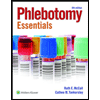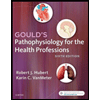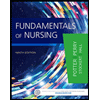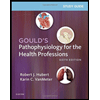
Concept explainers
To discuss:
How and why would the student nurse respond to this situation.
Case summary:
Ms. A is a 55-year-old female patient, who had undergone abdominal surgery and had a sigmoid colostomy. A student nurse is assigned to care for her along a staff nurse, the nurse observes that she drains semisoft brown stool and her stoma is bright red color. After many observations of changing colostomy bag, the student nurses attempts to change the colostomy bag for the first time.
Explanation of Solution
The student nurse gives care of changing the colostomy bags for the first time and makes some small mistakes like cutting a large bag. The patient can see the student nurse is still needed experience. The best response of the nurse is to avoid discomfort in the patient is to observe the staff nurse performing the practice for one more time.
To discuss:
The adequacy of the skills for professional practice and what that is tell about the student nurse.
Case summary:
Ms. A is a 55-year-old female patient, who had undergone abdominal surgery and had a sigmoid colostomy. A student nurse is assigned to care for her along a staff nurse, the nurse observes that she drains semisoft brown stool and her stoma is bright red color. After many observations of changing colostomy bag, the student nurses attempts to change the colostomy bag for the first time.
Explanation of Solution
The student is still not a Registered Nurse (RN) to become a staff nurse to carry out the skills efficiently. The student nurse needs more practice before caring for the patient.
To discuss:
Whether to agree with the criteria of the nursing student to evaluate a successful outcome.
Case summary:
Ms. A is a 55-year-old female patient, who had undergone abdominal surgery and had a sigmoid colostomy. A student nurse is assigned to care for her along a staff nurse, the nurse observes that she drains semisoft brown stool and her stoma is bright red color. After many observations of changing colostomy bag, the student nurses attempts to change the colostomy bag for the first time.
Explanation of Solution
The student, though made some mistakes while providing a technical competent skill in changing the colostomy bag; the patient’s safety is not compromised. As long as the patient’s safety is not compromised, there are no issues in the criteria.
To discuss:
Whether there is any other criteria that is appropriate to use.
Case summary:
Ms. A is a 55-year-old female patient, who had undergone abdominal surgery and had a sigmoid colostomy. A student nurse is assigned to care for her along a staff nurse, the nurse observes that she drains semisoft brown stool and her stoma is bright red color. After many observations of changing colostomy bag, the student nurses attempts to change the colostomy bag for the first time.
Explanation of Solution
The alternative criteria that define success are the patient should receive a safe care, patient safety is not compromised, and the staff nurse can demonstrate the technical competency for one more time.
To discuss:
Whether the nursing student meet the criteria? Why or why not?
Case summary:
Ms. A is a 55-year-old female patient, who had undergone abdominal surgery and had a sigmoid colostomy. A student nurse is assigned to care for her along a staff nurse, the nurse observes that she drains semisoft brown stool and her stoma is bright red color. After many observations of changing colostomy bag, the student nurses attempts to change the colostomy bag for the first time.
Explanation of Solution
The student nurse certainly met her criteria, without compromising the patient’s safety the student nurse is able to change the colostomy bag with some difficulties.
To discuss:
The knowledge, skills, and attitudes do you need to develop to continuously improve quality and safety when caring for child patients like Ms. A.
Case summary:
Ms. A is a 55-year-old female patient, who had undergone abdominal surgery and had a sigmoid colostomy. A student nurse is assigned to care for her along a staff nurse, the nurse observes that she drains semisoft brown stool and her stoma is bright red color. After many observations of changing colostomy bag, the student nurses attempts to change the colostomy bag for the first time.
Explanation of Solution
- The nurse should ensure the comfort of the patient all the time.
- The nurse should not compromise the safety of the patient.
- The nurse should show her inadequacy to the patient.
- The patient should think that the nurse still needs experience.
Want to see more full solutions like this?
- explain an abdominal exam?arrow_forwardDiscuss β -Lactam antibiotics under the following subheadings Classifications of penicillins Classification of Cephalosporins General Mechanism of Actions Clinical Indications of penicillins and cephalosporins Adverse effects of β-lactamsarrow_forwarda. Define neoplasm b. Differentiate between benign and malignant tumours c. Describe the molecular basis of cancerarrow_forward
- differentiate the extra heart sounds S3,S4, murmurs and gallopsarrow_forward• Define shock and list types of shock • Discuss pathogenesis of septic shock. • Enumerate the stages of shock. • Define oedema and describe the pathophysiologic mechanisms of oedema with examples.arrow_forwardDiscuss Hypertension under the following headings: Definition Diagnosis Non-pharmacological intervention Drugs Classification Management of a Hypertensive emergencyarrow_forward
- Explain how the answer could be 2 or 1.8 WITHOUT changing the questionarrow_forwardoverview of the neurological system, cranial nerves and what part of the body it innervatesarrow_forwarddifferentiate structure and function of the peripheral vascular system. what are the normal and abnormal findings of the peripheral arterioles and peripheral venous systemarrow_forward
 Phlebotomy EssentialsNursingISBN:9781451194524Author:Ruth McCall, Cathee M. Tankersley MT(ASCP)Publisher:JONES+BARTLETT PUBLISHERS, INC.
Phlebotomy EssentialsNursingISBN:9781451194524Author:Ruth McCall, Cathee M. Tankersley MT(ASCP)Publisher:JONES+BARTLETT PUBLISHERS, INC. Gould's Pathophysiology for the Health Profession...NursingISBN:9780323414425Author:Robert J Hubert BSPublisher:Saunders
Gould's Pathophysiology for the Health Profession...NursingISBN:9780323414425Author:Robert J Hubert BSPublisher:Saunders Fundamentals Of NursingNursingISBN:9781496362179Author:Taylor, Carol (carol R.), LYNN, Pamela (pamela Barbara), Bartlett, Jennifer L.Publisher:Wolters Kluwer,
Fundamentals Of NursingNursingISBN:9781496362179Author:Taylor, Carol (carol R.), LYNN, Pamela (pamela Barbara), Bartlett, Jennifer L.Publisher:Wolters Kluwer, Fundamentals of Nursing, 9eNursingISBN:9780323327404Author:Patricia A. Potter RN MSN PhD FAAN, Anne Griffin Perry RN EdD FAAN, Patricia Stockert RN BSN MS PhD, Amy Hall RN BSN MS PhD CNEPublisher:Elsevier Science
Fundamentals of Nursing, 9eNursingISBN:9780323327404Author:Patricia A. Potter RN MSN PhD FAAN, Anne Griffin Perry RN EdD FAAN, Patricia Stockert RN BSN MS PhD, Amy Hall RN BSN MS PhD CNEPublisher:Elsevier Science Study Guide for Gould's Pathophysiology for the H...NursingISBN:9780323414142Author:Hubert BS, Robert J; VanMeter PhD, Karin C.Publisher:Saunders
Study Guide for Gould's Pathophysiology for the H...NursingISBN:9780323414142Author:Hubert BS, Robert J; VanMeter PhD, Karin C.Publisher:Saunders Issues and Ethics in the Helping Professions (Min...NursingISBN:9781337406291Author:Gerald Corey, Marianne Schneider Corey, Cindy CoreyPublisher:Cengage Learning
Issues and Ethics in the Helping Professions (Min...NursingISBN:9781337406291Author:Gerald Corey, Marianne Schneider Corey, Cindy CoreyPublisher:Cengage Learning





